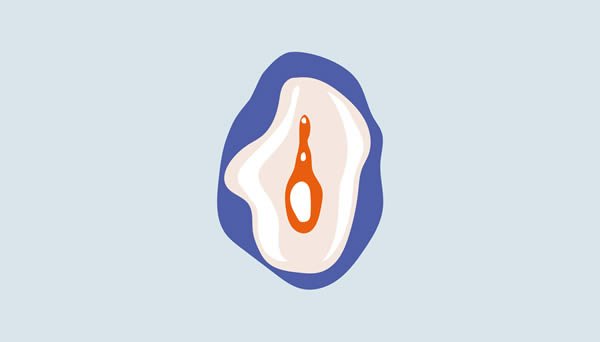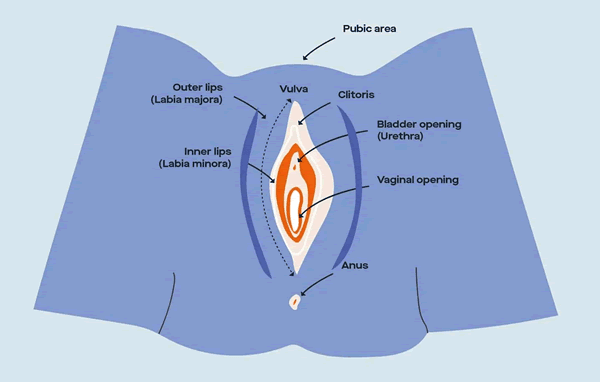
Growing up, we all watched the standard puberty video: You know, that video that told us a whole lot of nothing — conversely leaving us with a whole lot of questions? How many times have you glanced down there just out of curiosity? It may be time to grab a mirror and catch up with what’s actually going on with your vagina.
Vulvovaginal anatomy and how it all actually works
First things first, the proper term for what you may call your vagina is really your vulva. The vulva is the exterior part of your genital anatomy whereas your vagina is the tube that connects your vulva and your cervix — or the “neck of the uterus” as Doula and birth educator, Amy Lewis, says. Be aware that no two vulvas look the same. That said, listed below are the anatomical parts of your vulva and vagina that you can familiarize yourself with to help you identify what exactly your normal is.
Vulvas typically include:
- A set of anatomical body parts: the labia majora, labia minora, clitoris, clitoral hood, and opening to the vagina (vestibule)
- Bacterial colonies that make up your vaginal microbiome
Vaginas include:
- A combination of smooth muscle and ridges, known as rugae
- Secretion of certain fluids: Cervical mucus and other vaginal discharge

Starting from the outside of your body, where the vulva is…
- Mons pubis. That area right above your vulva where you get pubic hair during puberty.
- Labia minora/labia majora. The inner (minora) and outer (majora) lips that wrap around your vaginal opening.
- Clitoris. Sometimes known as the clit, where the lips of your labia minora meet at the top. In other words, the tip of the iceberg. Oftentimes, you cannot see the clitoral gland without pushing back the overlying tissue called the “clitoral hood.” Note: Both your inner and outer labia, as well as your clitoris, swell or engorge when you’re aroused.
- Urethra opening. Located a little below your clitoris, this is the hole that you pee out of.
- Vaginal opening. Where menstrual blood leaves your body, where babies come out of (most of the time — C-sections happen ~32% of the time), and where sex toys, penises, and fingers can potentially go inside.
- Vagina. Your vagina is a tube that connects your vulva to your cervix.
- Pelvic floor. A set of muscles that wrap around the vagina, urethra, and rectum, and provides support for your organs, helps you with continence (control of urination and bowel movements), and aids in orgasmic pleasure.
Once you travel through the vagina, you then get to the internal parts of your reproductive system like the cervix, uterus, fallopian tubes, and ovaries.
There isn’t a whole lot you have to do besides let your vulva do its thing. A few ways to do that include…
Promote a healthy environment. Your vagina and your vulva are extremely sensitive areas of your body. It’s important to create a healthy vulvovaginal environment to reduce the risk of vulvar irritation or bacterial infections. On the outside, Lewis recommends wearing undergarments that can breathe — like cotton! On the inside, Dr. Heather Jeffcoat, physical therapist and owner of Femina Physical Therapy, recommends drinking more water. “If your mouth feels dry, just imagine how your vagina feels!”
A few ways your vulvovaginal health can impact you if you ignore it:
Sexual dysfunction. One in every three people with vulvovaginal areas experience some form of sexual dysfunction. According to Dr. Jeffcoat, the pain you experience during sex can be a result of how much water you drink in a day or how often you perform kegels. Note: there are many other conditions that can contribute to pain with sex, or dyspareunia. While kegels are good for incontinence, Dr. Jeffcoat also recommends doing kegels to “learn to let go and lengthen” your pelvic floor muscles. Hyperactive pelvic floor muscles and vaginal dryness can make sex painful and less enjoyable.
Continue reading the full article at Modern Fertility here, and go here if you are ready to schedule an appointment with one of our licensed physical therapists.
